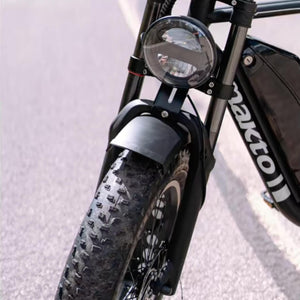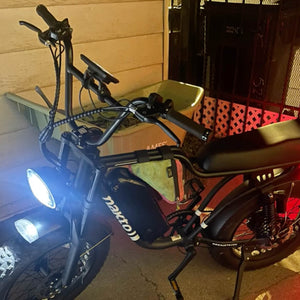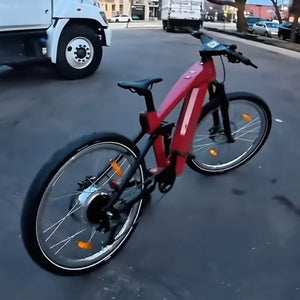Battery Storage Info & Tips: How to Keep Your PEV Battery in Top Condition
Feb 19, 2025
Introduction
Your e-bike or scooter’s battery is one of its most important components. Proper storage and maintenance can extend its lifespan, improve performance, and prevent costly replacements. Whether you ride daily or store your PEV for the season, knowing how to care for the battery will keep your ride ready when you need it.
This guide covers best practices for battery storage, how to prevent degradation, and what to do if your battery isn’t holding a charge.
1. Why Proper Battery Storage Matters
Batteries naturally degrade over time, but poor storage conditions can speed up the process. Issues like extreme temperatures, deep discharges, and improper charging habits can reduce battery efficiency and lifespan.
Effects of Poor Storage:
- Capacity Loss: A battery stored incorrectly may not hold a full charge.
- Shortened Lifespan: Overheating or extreme cold can cause permanent damage.
- Power Failures: Loose or corroded connections can lead to unexpected shutdowns.
- Increased Fire Risk: Storing batteries in unsafe locations can lead to overheating or malfunction.
Proper storage ensures your battery stays safe, efficient, and long-lasting.
2. Best Practices for Storing Your Battery
If you won’t be using your e-bike or scooter for an extended period, follow these steps to keep the battery in top condition.
Storage Guidelines:
- Keep Charge Between 40-80% – Storing a fully depleted or fully charged battery for long periods can lead to faster degradation.
- Store in a Cool, Dry Place – Avoid areas with extreme heat or freezing temperatures. A room between 50-77°F is ideal.
- Avoid Humid or Wet Environments – Moisture can cause corrosion and damage electrical connections.
- Disconnect the Battery If Not in Use – If your PEV will be unused for weeks or months, remove the battery to prevent power drain.
- Charge at Least Once a Month – Even if not in use, recharge the battery monthly to prevent deep discharge, which can permanently damage lithium-ion cells.
Following these steps ensures your battery stays reliable and ready to go when you need it.
3. Common Mistakes to Avoid
Many riders unknowingly shorten their battery’s lifespan by making these mistakes.
Battery Storage Mistakes:
- Leaving It Fully Discharged: Storing a dead battery for long periods can cause irreversible damage.
- Exposing It to Extreme Temperatures: Heat speeds up degradation, and freezing temperatures can permanently damage cells.
- Using an Incompatible Charger: Off-brand or low-quality chargers may not regulate power properly, leading to overheating or capacity loss.
- Leaving It Plugged in Too Long: While most modern batteries have safeguards, prolonged charging can generate excess heat and wear out cells faster.
Avoiding these mistakes will help maintain battery health and prevent unnecessary replacements.
4. What to Do If Your Battery Won’t Hold a Charge
If your e-bike or scooter battery isn’t performing as expected, try these troubleshooting steps.
Troubleshooting Tips:
- Check the Charger: Ensure you’re using the correct charger and that it’s functioning properly.
- Inspect Battery Terminals: Look for dust, corrosion, or loose connections. Clean gently if needed.
- Try a Reset: Some battery management systems (BMS) have a reset function. Refer to your manufacturer’s guide.
- Charge in a Safe Temperature Range: If stored in extreme cold, bring the battery to room temperature before charging.
If the battery still won’t charge, it may need professional servicing or replacement.
Final Thoughts
Proper battery storage is essential for maintaining the longevity and performance of your e-bike or scooter. Keeping your battery at the right charge level, avoiding extreme temperatures, and following safe storage practices can prevent long-term damage and extend its lifespan.
If you’re experiencing battery issues, a professional inspection can help diagnose problems before they become costly repairs. Book a service today to keep your ride powered and reliable.







